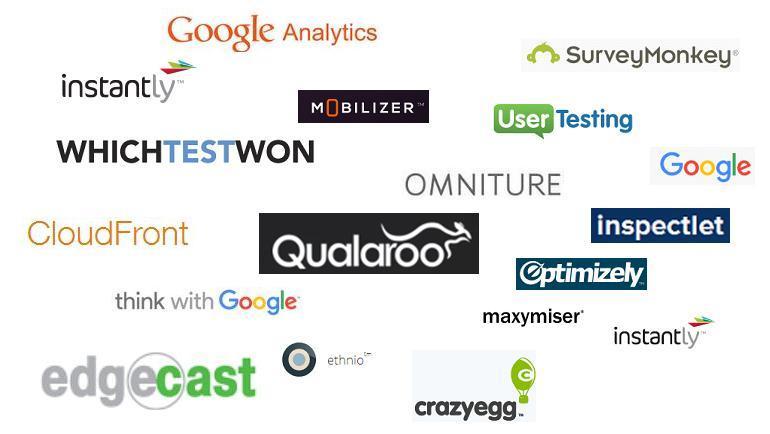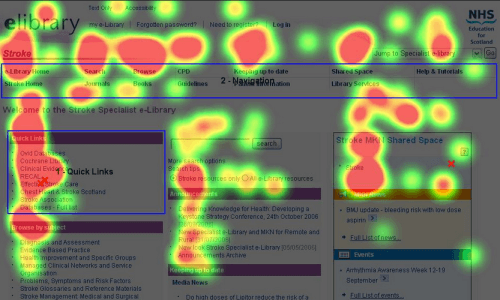Last Updated January 13, 2018
Go with your gut feeling?
Heck no! Sure, your accumulated experience offers you an edge – and a very sharp one – but you and I know that marketing today is all about building on your instincts and expertise with tests. Data is king. Agility is queen. Dump old hypotheses whenever they’re proven wrong, and pivot fast when the evidence is clear.
And a host of new, remarkably effective online mobile optimization tools are critical to making those judgments of what’s working and when it’s time to trash old preconceptions, outdated best practices, and just plain wrong assumptions. That’s especially true in the new marketing science of mobile Conversion Rate Optimization (CRO).
The Royal ROI of CRO Tools
A recent study by Venture Beat surveyed nearly 3,000 CRO tool users. They discovered that fully 34 of 36 CRO tools delivered impressively significant returns . And among those 2938 marketers surveyed, 95% generated a ROI when applying a grab-bag of CRO apps – on average a remarkable 223% ROI.
In my previous post on mobile CRO, I argued that eCommerce and webdev teams must refine their tactics for mobile. A single all-purpose strategy to optimize your website without recognizing critical differences between mobile and desktop PCs may result in lost opportunities or worse – your brand tarnished and your customers dissatisfied.
The 4 Stages of Mobile Optimization
CRO typical proceeds through a sequence of four stages with each stage employing its own toolset. And yes, these stages can be viewed as a permanent cycle propelling perpetual progress (try saying that 5 times fast).
Stage 1. Assess current performance and establish baseline measures
To start, you need to know your past performance so you can measure the impact of any improvement. These metrics will provide the definitive evidence of what works and what doesn’t.
Stage 2. Insight generation
Second step is to investigate your mobile visitors’ journeys through your pages, determining where and why they are dropping off the page and failing to convert. What do mobile customers expect when they make that fateful click to visit your site and what does your site actually deliver?
Then, just as with traditional CRO for websites, the data will be used to formulate hypotheses about the requirements, frustrations and motivations of each type of user.*
Stage 3: Brainstorming innovation and deploying best practices
Stage three is creating alternatives to the existing page (the control) and testing those variations. Here, designers, developers and digital markets should be guided by best practices – the accumulated wisdom of what works to enhance conversion rates – but also creativity, since your brand, your value proposition and your target audience is unique and you are out to make your distinctive mark on the marketplace.
Stage 4: Assessing and implementing
In the final stage, you assess your test results, determine the winner and commence implementing your CRO innovations. And then, you initiate the cycle once again.

Top 15 Must-Have Mobile Optimization Tools
Stage 1 Tools: Baseline numbers
Google Analytics is the go-to solution for measuring key metrics of performance for most savvy marketing masters. In its free version, GA delivers the essential numbers for sales and conversions and a host of other metrics such as bounce rate, load rate, time of engagement. GA also enables you to segment your traffic and its performance along multiple dimensions, but most importantly to separate the behavior of mobile visitors from those of your desktop.
Venture Beat reports that “GA is currently being used by 59.96% of websites.” While Google is dominant, most web masters typically deploy a second analytic tool to capture more granularity.
Mobilizer delivers unique device-level mobile metrics, including bounce rate, conversion rate, session length and load time. Mobilizer’s analytics, highlight significant variances in performance among devices. That lets you to see what’s working and what’s not, so you can troubleshoot deficiencies or identify successes (and then leverage those gains across all mobile devices). Furthermore, Mobilizer’s numbers highlight the share of traffic coming via each phone or tablet, so you can concentrate on optimizing the devices that will deliver the best ROI.
Omniture, part of the Adobe Marketing Cloud, is an enterprise-level analytics tool. It uses browser cookies to collect data. Ominture’s features include custom drill-down reporting, mobile device reporting, detailed geo-location and ISP identification. Ominiture, says Dan Newman, penetrates 50% of the market.
Stage 2 Tools: Hypothesis building
Stage 2 tools are the most varied and ground breaking. From multiple angles, they probe your customers’ journeys – what visitors expect, what is the flow, where they are dropping off, where they are converting and why.
“At the early stages,” says AWA Digital, “we don’t know where the most valuable insights might spring from.” So a grab-bag of tools is necessary, including info on traffic flows and drop-off points, insights from the call center team who speak to customers every day, UX testing and customer surveys.
Customer Surveys
Survey Monkey is a widespread, easy-to-use and reasonably priced online survey tool. It provides nice analytics and the ability to slice and dice data from a number of perspectives.
Google Surveys also delivers onsite surveys in a clean effective manner with easy access to data.
Qualaroo is a third survey option. It lets you shift questions to your visitors depending on which device they’re using. That’s crucial when you are trying to parse mobile for what will lift conversion rates.
Instantly offers more robust survey visualizations than Survey Monkey. It can probe participants with multiple questions, ranking, eliciting user feedback from photos, videos and more.

Heat Maps
Heat maps are a particularly effective visual representation of website visitor behavior and, specifically, which links are most used by your website visitors as they navigate from page to page.
Crazy Egg enables you to generate and compare heat maps for your desktop, mobile and tablet pages.
With Inspectlet, you can find out what your visitors are clicking on, whether it’s a button, link, an image, or text. Figure out which “buy now” button visitors are clicking more. Includes eye-tracking and scroll tracking.
Funnels and Flows
Funnel and flows enable the critical analysis of the sequence of steps taken by a visitor to your website as they either convert or depart. While funnel refers to all the touchpoints with which a prospective customer may interact including multiple visits to your site, flow refers to the steps taken within the website.
The very useful Google Flows is part of Google Analytics and lets you slice and dice your traffic in its journey through your site.
KissMetrics Funnels gives you the intelligence to pinpoint where you are losing site visitors and whether the losses are occurring at the normal rate.
User Testing
This UX methodology presents the website to a typical user who then navigates through a series of tasks while narrating their experience along the way. Used by most enterprise UX teams to ensure the website works as designed.
UserTesting.com is an online tool that offers both moderated and unmoderated options. You can specify demographics, set up tasks for the user to experience, and probe with follow-up questions.
Ethnio lets you recruit mobile specific users to conduct in-the-moment mobile usability testing.
Stage 3: Innovating and Testing
Stage three is creating alternatives to the control page – what exists – and testing those variations.
Best Practices and Past Test Results
Think with Google is a reference library that often provide industry-specific insights based on Google funded research and white papers on customer behavior, search patterns, etc. While it does not offer fully comprehensive coverage, it is worth examining when initiating discovery and user research activities.
Which Test Won reviews industry best practices and results from hundreds of A/B tests helping to provoke your own ideas for website tests.
A/B Testing
A/B testing is a vital tool that offers powerful results. In these tests, website visitors are divided into two groups which then interact with competing versions of the website. The results are then reviewed to determine which site version performs better. The A and B versions of the website can differ by just one single viable to ensure pinning down what cause improved performance or they can vary by a whole host of factors as you radically experiment with innovation.
Optimizely is a leading solution that at offers both split A/B and multivariate testing to optimize your site. The results are delivered to the analytics tool of your choice through their integrated API.
Oracle’s Maxymiser, an enterprise tool, offers tests – from simple A/B tests to sophisticated multivariate. Get data on which web pages (design and content) perform the best.
Stage 4: Test Assessments and CRO Implementations.
Stage 4 is the concluding step, where test results are assessed and the winning innovations are implemented.
Load Time
Among the top targets for mobile CRO is load time. Here are two tools that have proven effective in speeding load time.
Edgecast (now Verizon Digital Media) offers an effective content delivery network (CDN) that helps companies accelerate the delivery of static and dynamic content to website users.
Amazon CloudFront is considered one of the best in this space. It integrates with Amazon Web Services to distribute content to end users with low latency and high data transfer speeds.
QA
As every digital marketer or developer knows, implementation isn’t complete without Quality Assurance. After all your CRO efforts, you can’t afford to stumble on the final step to improved user experience. Nothing beats our internal tool (Mobilizer) for fast, accurate visual inspection of your website on all the leading phones and tablets. Scroll through side by-side screenshots from actual devices and make sure that all your pain-staking efforts are indeed delivering the optimal user experience as planned and without any bugs or glitches.
*AWA Digital, “The Future of Mobile Conversion Rate Optimisation”
- Google’s AMP: Enemy or Ally to Your Mobile Friendly Website? - January 29, 2018
- Mobile Marketing: Optimize the Mobile Customer Journey - January 29, 2018
- Mobile Load Time: Increasing Mobile Page Speed to Improve Mobile Conversion - January 22, 2018
